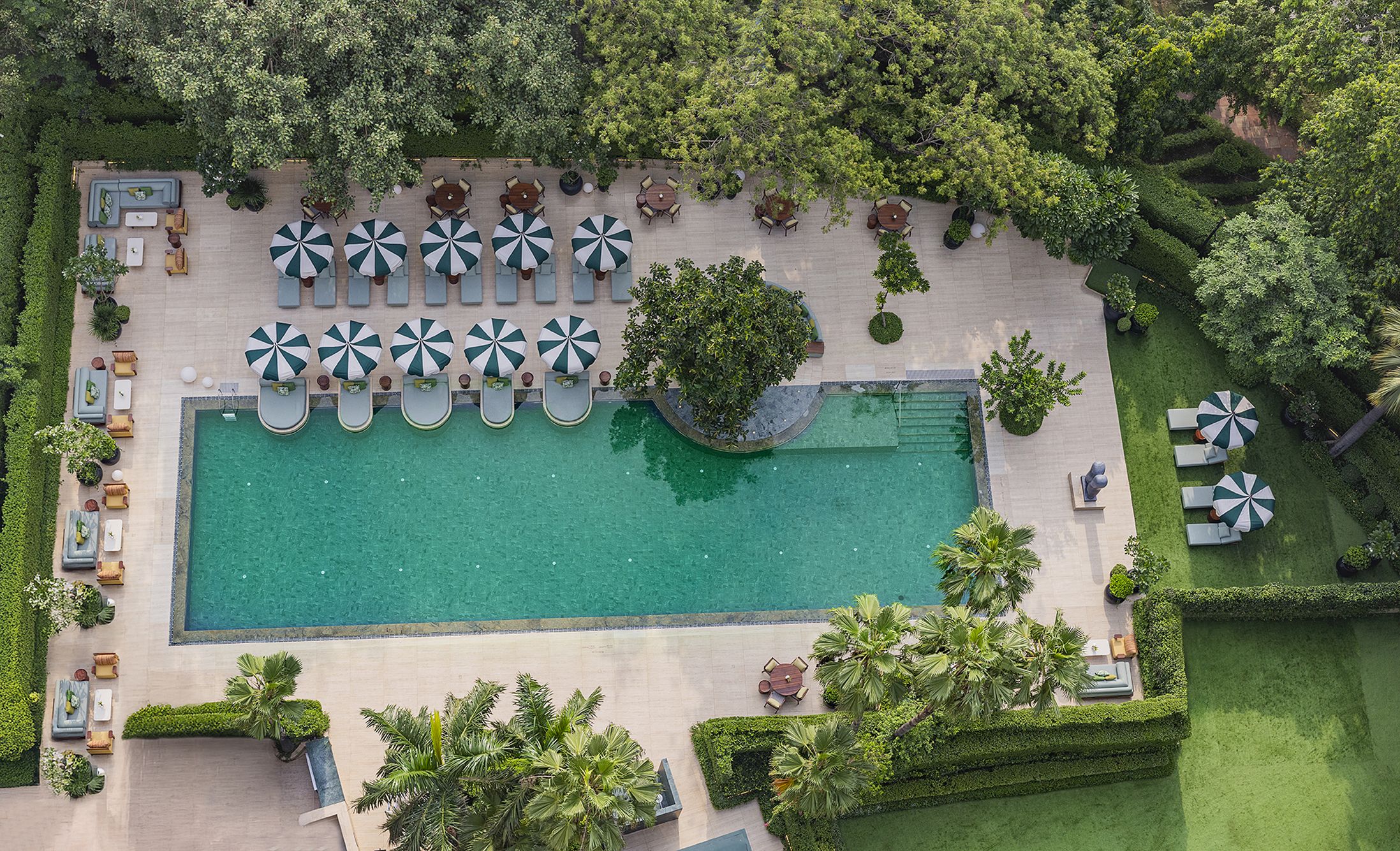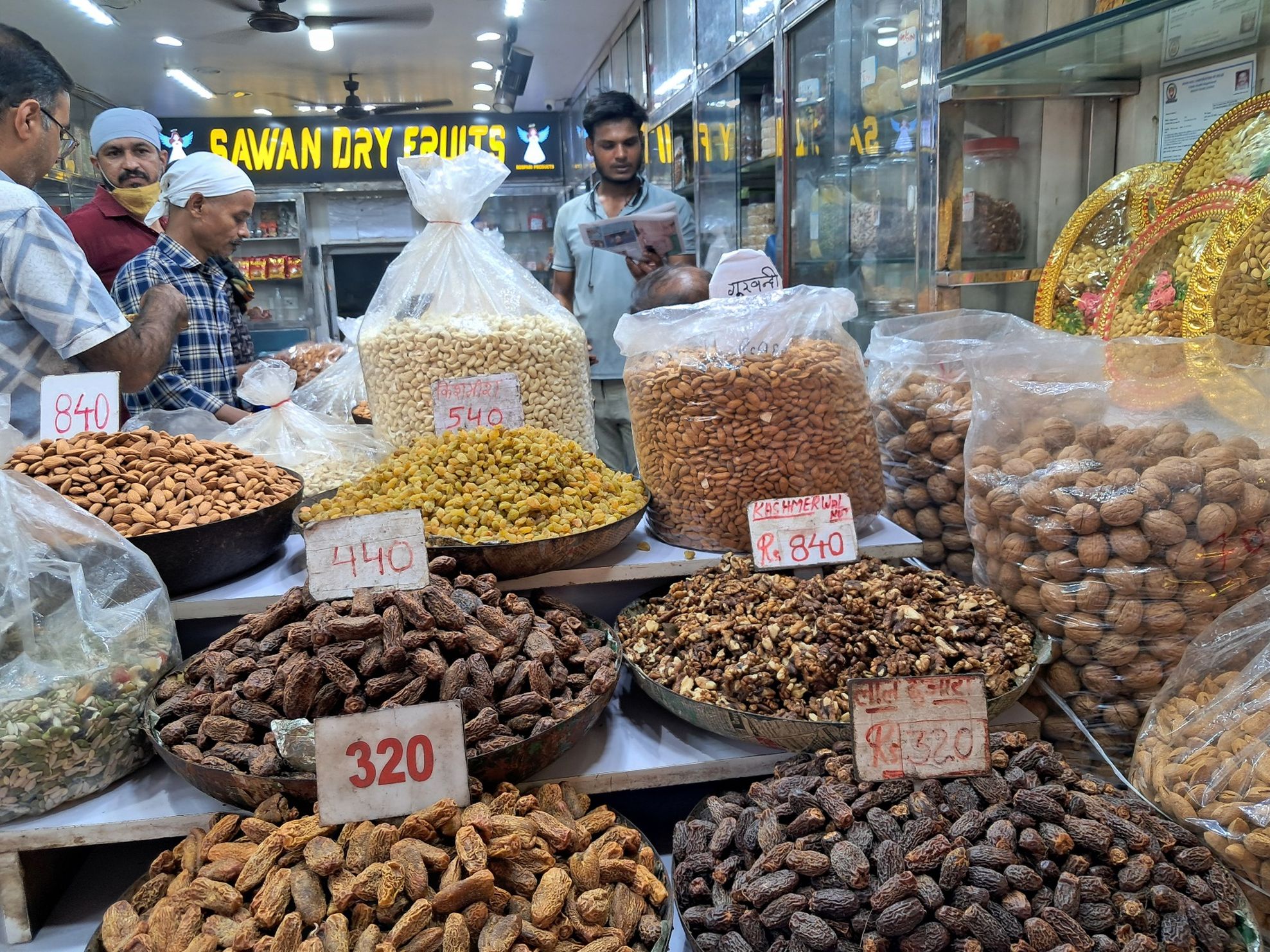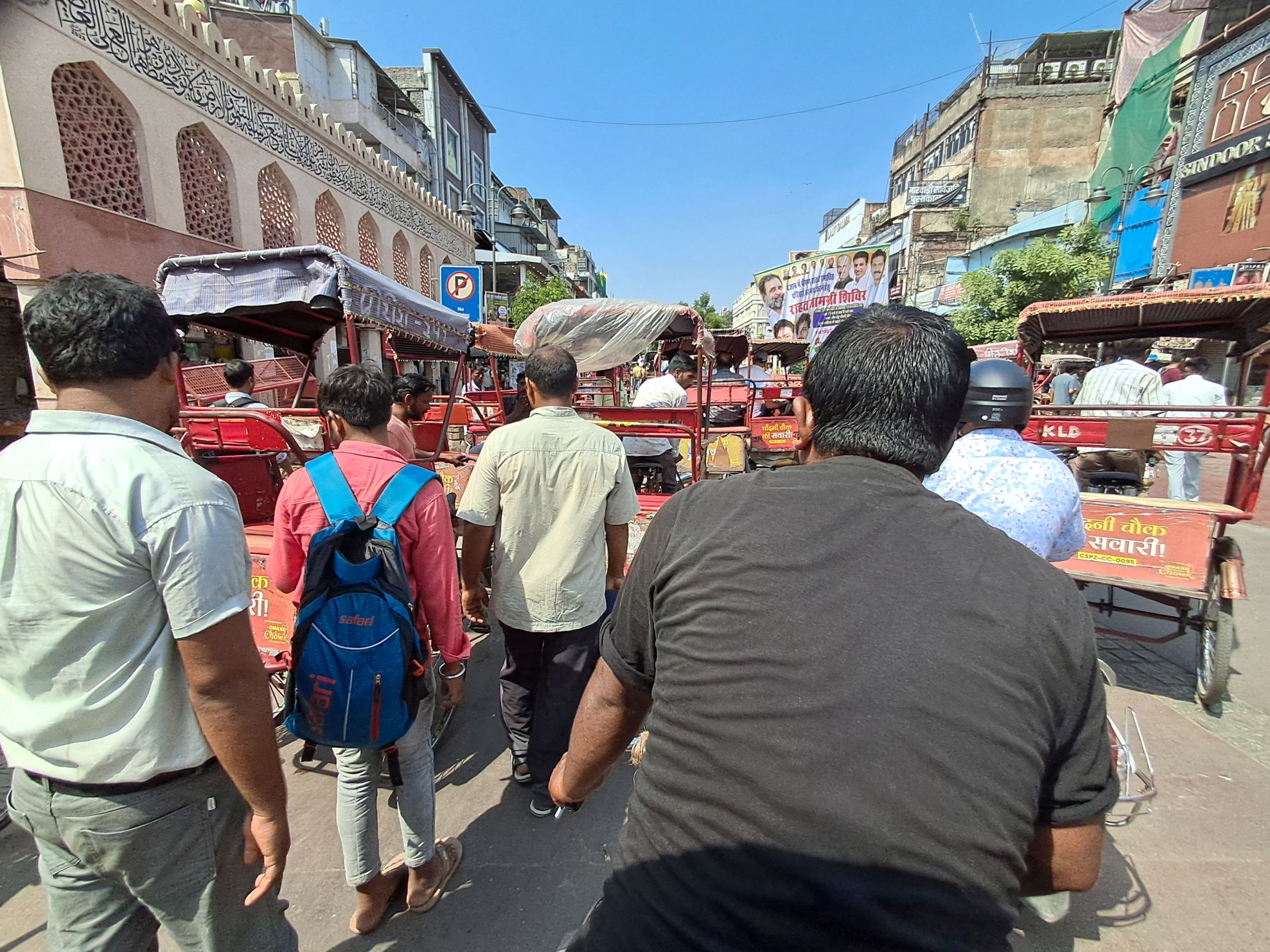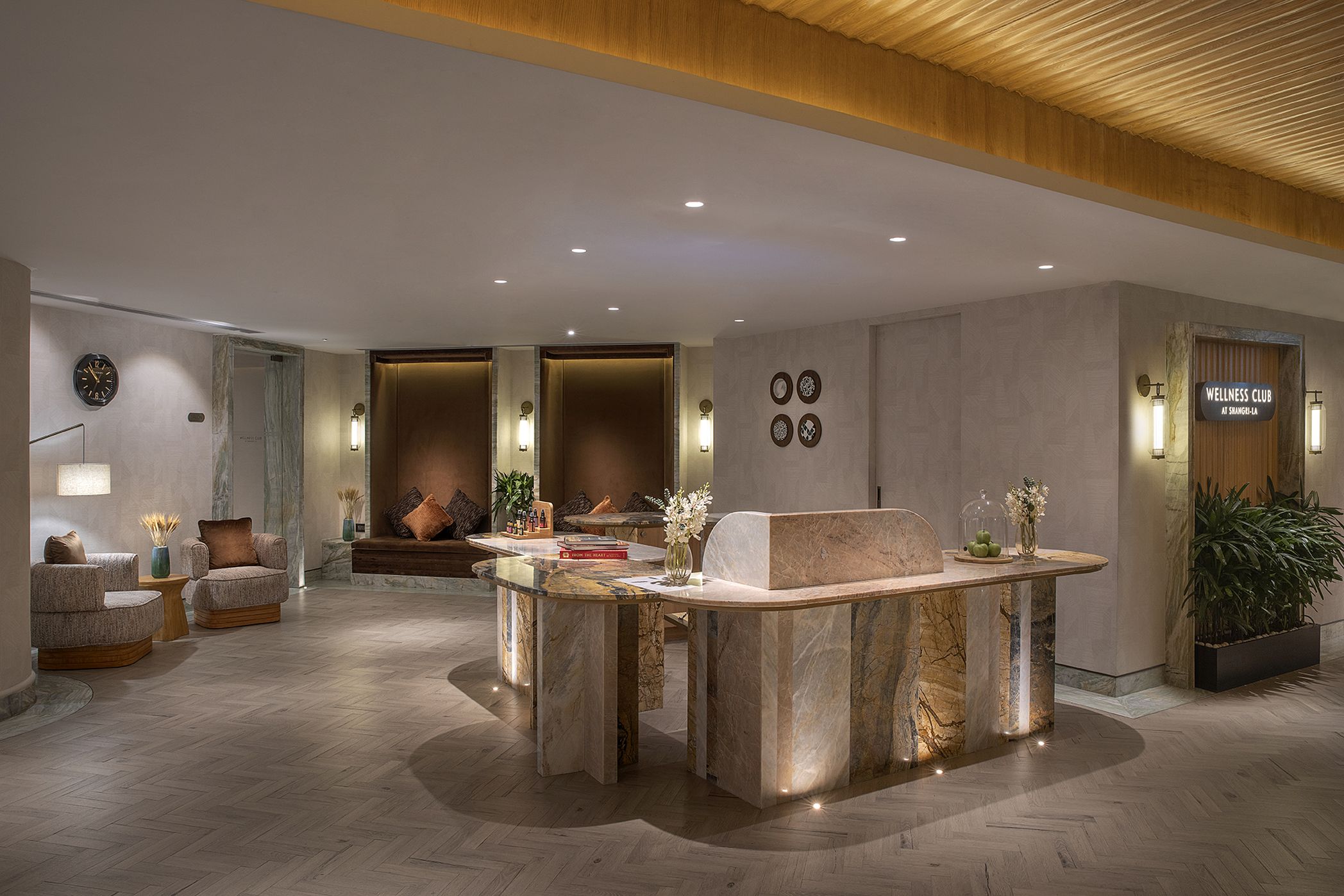Follow
the podcast on


As the capital of the world’s largest democracy, Delhi embodies the essence of modern India – a vivid paradox of old and new, rich and poor, foreign and familiar. It’s been fourteen years since my last visit and the economic transformation is ever-present. High rises, swanky malls and residential colonies housing the booming middle-class are mushrooming everywhere. As my engaging Wendy Wu Tours guide Girish remarked, as we were whisked into the city from the airport, “Delhi is more than a mere city, it has morphed into the national capital region.” With the metropolitan population now nudging 30 million, Delhi is a megalopolis and on-track to becoming the world’s most populous city in three years’ time.

Our hotel was in New Delhi, the more modern, planned city within a city, that was built by the British in 1911 and replaced Kolkata as the national capital, twenty years later. In a city notorious for its air pollution, which is supposedly steadily improving, one of the great paradoxes of New Delhi is that it’s also swathed in a sprawling green canopy. It’s arguably the greatest legacy from British rule, because the new city was deliberately, meticulously planned to be nestled within a vast green cover, fanning out from Connaught Place on those broad long avenues. Large-canopy trees like banyans, mango, and pilkhans were selected by the British, while indigenous trees ideally suited to the climate have added to the canopy in recent decades. That sprawling tree cover is certainly a godsend from the fierce Delhi heat.
Delhi’s contradictions abound. You’ll still see working elephants trudging along traffic-clogged roads, as fire-engine red Ferraris zip by. Handwritten posters singing out, “Customs confiscated goods sold here,” still compete next to glossy fashion billboards for Gucci and Prada. It’s all part of Delhi’s curious fabric. The city is littered with so many crumbling tombs and ruins, most of them are not even on the tourist map. But if you are a first-timer to the city, signature sights include marvelling at the sheer grace of the soaring Qutb Minar Tower.
It was built 800 years ago by the Turkish Slave King Qutb-ud-din Aibak to celebrate his victory over the Hindu Rajputs. Wander through the sculptural Jantar Mantar, a huge, open-air astronomy observatory built in 1725 by Jai Singh, creator and ruler of Jaipur. Admire the 16th-century garden tomb of Mughal Emperor Humayun, precursor to the Taj Mahal, which was built by Humayun’s great-grandson. Over in Old Delhi, two Mughal-era masterpieces, the imposing Red Fort (which was the Mughal seat of power for 200 years) and Jama Masjid, India's largest mosque. Both sandstone show-stoppers are definitely worth exploring. The mosque was commissioned by Shah Jahan in 1656 and it took 5000 labourers 6 years to complete. Within its hallowed walls lie sacred relics like Prophet Muhammad's hair.

Beyond ticking-off the capital’s great monuments, heading to Old Delhi is like a journey back in time. The beating, chaotic, carnival-like heart of Old Delhi is Chandni Chowk, Delhi’s 400 year old marketplace that was built by the Mughal Emperor Shah Jahan. The market has been redeveloped to tame some of the chaos, including some fully pedestrianised streets and non-motorised transport lanes. But as I gazed at the spaghetti-like tangle of street wiring that garlands the crowded market lanes, there’s no denying the ramshackle, faded glory feels amid this pulsating hot-spot of old-school commerce. Be sure to get your fill of jalebis from a street food vendor. Made from a deep-fried spiral-shaped wheat flour batter, which is then soaked in a sugar syrup, a plate of piping hot, crispy, sticky jalebis is a very satisfying sugar hit.

We enjoyed a classic rickshaw ride through the throng of traders, shoppers and wandering cows, all heaving in those pencil-thin lanes. Girish also led us through the Khari Baoli Spice Market in Chandni Chowk, positively bulging with so many spices, nuts, herbs, pickles, preserves, rice and teas. Renowned as Asia’s largest wholesale spice market, it’s an aromatic head-blast. Shops and stalls bulge with heaping mounds and baskets of over a hundred different spices, headlined by turmeric, cardamom, coriander, star anise, ginger and cumin. Just as they have for hundreds of years, shoppers, dealers and chefs converge here every day to haggle and hustle.
Many vendors have been peddling their wares for generations. Dawdle too long in front of a stall, and traders with huge sacks of chilis or cardamom pods will soon bump you out of their way. One of the oldest and tidiest shops is Mehar Chand and Sons. They’ve been in business since Queen Victoria ruled over them. And it’s a great place to stock up on packaged spices, tea and saffron. Anshu Kumar, who is part of the family that has owned the shop since its inception, tells me that one of their biggest sellers with international visitors is turmeric, powered by the world’s booming love-affair with this powerful superfood and supplement. (Their packaged products are allowed in New Zealand – just be sure to declare them.)
Heading back to the hotel, we also stopped by the Indian parliament and sized up the monolithic might of India Gate. Designed by Sir Edwin Lutyens, this monstrous landmark is more than just a stunning feat of architecture—it's a poignant memorial to the 70,000 Indian soldiers who laid down their lives during World War I and the Third Anglo-Afghan War. Beautifully illuminated after sunset, street food vendors and ice cream carts line the area, swathed in sprawling lush gardens.

The great thing about a Wendy Wu Tours private holiday is that you have complete flexibility over how much temple-touring and sightseeing you want to do. Equipped with your own driver and guide, it’s a stress-free way to tackle Delhi. The itinerary can be as active or as laid back as you are, with full flexibility over included meals and excursions. You’ll be in the best of hands with Wendy Wu Tours. www.wendywutours.co.nz/india
Nothing beats retreating to a leafy oasis of eminent comfort and style after a hot, sticky day intrepidly gorging on the city sights. Nestled along the tree-lined boulevards of Connaught Place, Shangri-La Eros New Delhi, is a five-star hotel with serious wow-factor. From the moment you step inside the grand art-filled lobby, you know you are somewhere special. Service is swift, sparkling, flawless and convivial. It’s the epitome of affordable luxury, with sharply-priced room rates that won’t blow your budget. Push the boat out and lock in a Horizon Club room or suite. That will give you access to the hotel’s cherry on top, the 19th floor Horizon Club lounge, allowing you a quick check-in, breakfast, evening cocktails and light bites. Plus panoramic views of the city’s skyline.

The hotel’s arsenal of dining venues is very impressive. Head to Mister Chai for some authentic Indian street food coupled with flavoured tea and coffee. There is Tamra serving European, Japanese, Indian, Thai and Southeast Asian fare from live kitchens. “Lavish” doesn’t do justice to the expansive array of buffet options at Tamra for breakfast. Sorrento specialises in Italian food with a contemporary twist and Shang Palace offers flavours of Sichuan, Cantonese and Yunnan cuisines. This is a signature dining venue in Shangri-La hotels and Shang Palace is widely feted as the world’s most loved Chinese specialty restaurant. Dining here was divine, noshing on prawn dumplings with caviar; Xinjiang spice twice cooked baby lamb ribs; and the Cantonese BBQ platter. Shang Palace is a must.
Celebrating it’s 20th birthday this year, Shangri-La Eros is not the sort of hotel to rest on its laurels. And with wellness offerings continuing to be increasingly sought after, the hotel recently unveiled a wealth of enticing new amenities. The Wellness Club boasts offers over 4,000 square feet of world-class fitness space, advanced recovery therapies, a 100-feet outdoor swimming pool, salon, spa, and a calming hydrothermal zone featuring a cold plunge, Himalayan salt sauna, whirlpool, and steam. What more could you want for personal pampering? The Wellness Club seamlessly blends conscious luxury with modern wellness. Designed by Dubai’s Stickman Tribe, Dubai, the interior is bathed in natural hues and hand-painted art.

Calming music sets the tone for a serene escape with gilded details and reflective surfaces lending a touch of grandeur to the venue. The Spa has become a runaway hit with custom-crafted amenities to indulge the senses. Signature rituals include the Taste of India Retreat, Signature Indulgence, and a Couple’s Serenity Bath, crafted to nourish the body and calm the mind. But my favourite hotel feature is the enormous new pool. Tranquil corridors lead you outdoors to the gloriously leafy green space, crowned with that magnificent pool and elegant sun loungers. As black kites circled high above in the sky, and mischievous rhesus macaques swung between the trees – much to the annoyance of nesting rose-ringed parakeets, marinating myself in the hotel’s glorious pool became a rinse-and-repeat prize draw. www.shangri-la.com
From New Zealand, it’s just a one-stop connection to a multitude of destinations in India, including New Delhi, with Singapore Airlines, on their various daily services from Auckland and Christchurch to Singapore. Enjoy well-timed connections for an easy transit in Singapore. Across all classes of travel, the award-winning carrier has not only fostered a world-beating reputation for its exceptional customer service and in-flight product, but also its innovation. Become a KrisFlyer member and enjoy complimentary in-flight WiFi. For best fares and seats to suit head to https://www.singaporeair.com
Mike Yardley is our resident traveller on Jack Tame Saturday Mornings.
Take your Radio, Podcasts and Music with you








